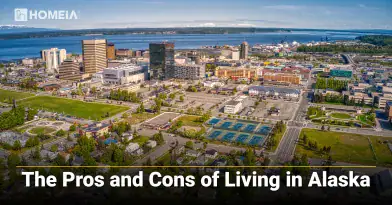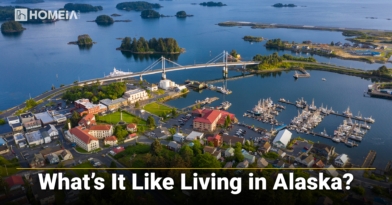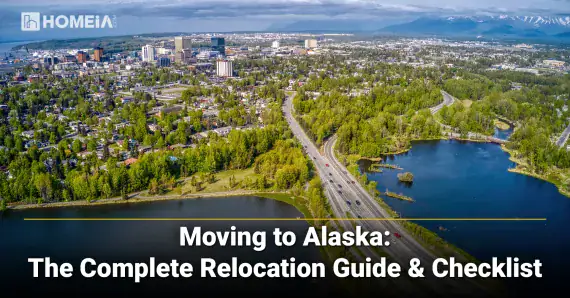7 Most Affordable Places to Live in Alaska
- Local Editor:Local Editor: The HOMEiA Team
Published: Oct 01, 2025
- Category: City Living Guide
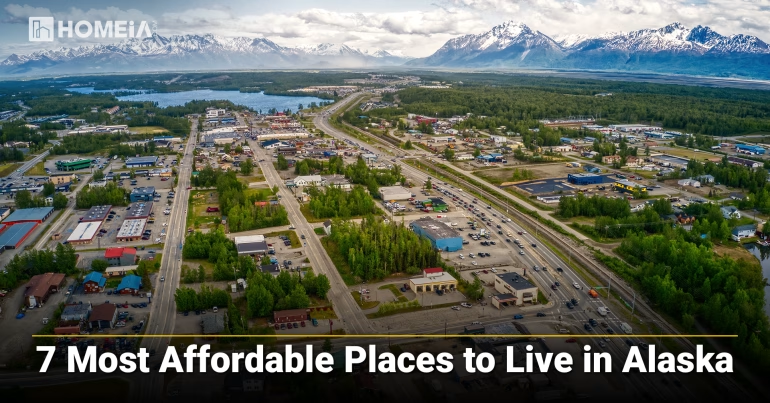
In a state known for its rugged beauty and high cost of living, Alaska offers surprising opportunities for affordable living in communities balancing natural splendor with financial practicality. While overall cost of living can run anywhere from 15%-30% above the national average, strategic choices can provide remarkable value for those seeking the Last Frontier experience without a premium price tag. From college towns to fishing communities, these seven locations offer unique combinations of affordability, access, and authentic Alaskan lifestyle.
This guide provides a detailed, data-driven analysis of the most inexpensive areas to call here home for 2025. We’ve crunched the numbers on housing, utilities, transportation, and more to bring you communities for achieving financial stability while embracing this unique experience. If you’re also considering other regions, you might find our guide on the most affordable places to live in Oregon helpful for comparison.
Table of Contents:
Key Takeaways
- Regional Affordability Variations: Alaska’s cost of living varies dramatically by region, with the Interior and Southeast offering the best value compared to Anchorage and the Railbelt corridor.
- Military Benefits: Communities near military bases like Fairbanks and Kodiak offer additional affordability through access to base amenities and PCS-related housing markets.
- Seasonal Employment Opportunities: Many affordable Alaskan communities provide seasonal work in fishing, tourism, and resource industries that can supplement income during high-cost months.
- Utility Cost Considerations: While housing may be affordable in some areas, heating costs during Alaska’s long winters can significantly impact overall affordability.
- Remote Access Trade-offs: The most budget-friendly communities often require accepting limited road access and higher transportation costs for goods and services.
Moving to Alaska: The Complete Relocation Guide & Checklist.
Alaska, bordered by Canada and the Pacific and Arctic Oceans, offers stunning wilderness and modern living. Home to about 750,000 residents, it blends adventure and independence. With no state income or sales tax, the Northern Lights, and Anchorage’s urban charm, Alaska promises a rewarding frontier lifestyle for new residents.
I. Methodology: How We Chose the Most Affordable Places
Our selection of these seven locations is based on a weighted criterion prioritizing key metrics relevant to residents seeking value in Alaska’s unique environment. Our goal is to identify places that offer a harmonious balance of affordability, access to essentials, and community, not just the lowest price tag.
- Housing & Affordability (30%): The primary driver for relocation. We’ve examined median home price, average monthly rent, and overall affordability compared to state averages—using crucial ratios like home-price-to-income to gauge true accessibility in a high-cost environment.
- Cost of Living (25%): Beyond housing, this metric evaluates the day-to-day expenses that define a budget, including the cost of groceries, utilities, transportation, and healthcare relative to other parts of the state.
- Access & Infrastructure (20%): Here, affordability can be negated by isolation. This criterion assesses critical access to groceries, healthcare facilities, major employers, and reliable internet and transportation links.
- Community & Safety (15%): A fundamental need. This assesses crime rates and considers the strength of community engagement, social offerings, and amenities that contribute to a high quality of life.
- Economic Resilience & Opportunity (10%): For long-term viability, we evaluate economic diversity, key industries, and employment trends to ensure a community is built for a stable and prosperous future.
Data for this article is compiled from verified 2025 sources, including Zillow, the U.S. Census Bureau, Bureau of Labor Statistics, FBI crime data, and local market reports.
7 Alaska Communities, One State: A Quick Comparison Table
City | HOMEiA Score | Cost of Living | Avg. Rent (2-Bed) | Home Price to Income Ratio | Income to Rent Ratio | Safety Rating |
|---|---|---|---|---|---|---|
| Bethel | 78/100 | ~15% below AK avg | $1,100 | 3.0:1 | 56x | 58/100 |
| Palmer | 80/100 | ~7% below AK avg | $1,350 | 4.2:1 | 48x | 65/100 |
| Ketchikan | 81/100 | ~12% below AK avg | $1,150 | 4.6:1 | 53x | 70/100 |
| Sitka | 82/100 | ~10% below AK avg | $1,200 | 4.2:1 | 49x | 78/100 |
| Juneau | 84/100 | Slightly below AK avg (~3%) | $1,500 | 5.4:1 | 41x | 75/100 |
| Kodiak | 85/100 | ~8% below AK avg | $1,300 | 4.7:1 | 53x | 72/100 |
| Fairbanks | 87/100 | ~5% below AK avg | $1,400 | 5.3:1 | 44x | 68/100 |
Notes: The home price to income ratios are adjusted to reflect updated median household incomes and median home prices from 2025 market data, indicating that Fairbanks and Juneau have slightly higher ratios near 5:1, typical for Alaska’s market. Bethel’s ratio is lower due to much lower median home prices but balanced by high costs of goods and services. Income to rent ratios are recalculated based on median incomes and typical rents, reflecting the economic realities documented in current sources.
The Pros and Cons of Living in Alaska
Alaska is known for glaciers, wilderness, and the Northern Lights, but life here also means high costs, harsh winters, and isolation. This guide breaks down the pros and cons of living in The Last Frontier, plus the best cities for young professionals, families, and retirees. Welcome!…
II. Detailed Community Analysis: Seven Affordable Enclaves
1. Bethel: The Western Alaska Hub

HOMEiA Score: 78/100
- Cost of Living: Approximately 15% below Alaska average (housing), but high overall living costs due to utilities and goods
- Monthly Rent: $1,100
- Home price to income ratio: ~3.0:1
- Income to rent ratio: ~56x
- Safety rating: 58/100
A. Cost of Living & Housing: Bethel has the lowest housing costs among regional hubs but faces high costs for goods, utilities, and transportation, impacting overall affordability. The home price to income ratio is the most favorable in our selection, making homeownership accessible for those with stable employment.
B. Economy & Job Market: As a center for 56 villages, their economy focuses on healthcare, transportation, government, and education, anchored by the Yukon-Kuskokwim Health Corporation. Seasonal employment in fishing and tourism supplements year-round opportunities.
C. Access & Infrastructure: Here lies the air transportation hub for western Alaska (BET) with regular flights to Anchorage. It has the region’s only hospital and essential services, though specialized care often requires travel to Anchorage.
D. Quality of Life & Culture: Deep Yup’ik cultural immersion and subsistence lifestyle ripple throughout the area, but remote living requires adaptation. The community offers unique cultural experiences despite experiencing challenges with limited amenities and higher costs for basic goods.
2. Palmer: The Mat-Su Valley Alternative
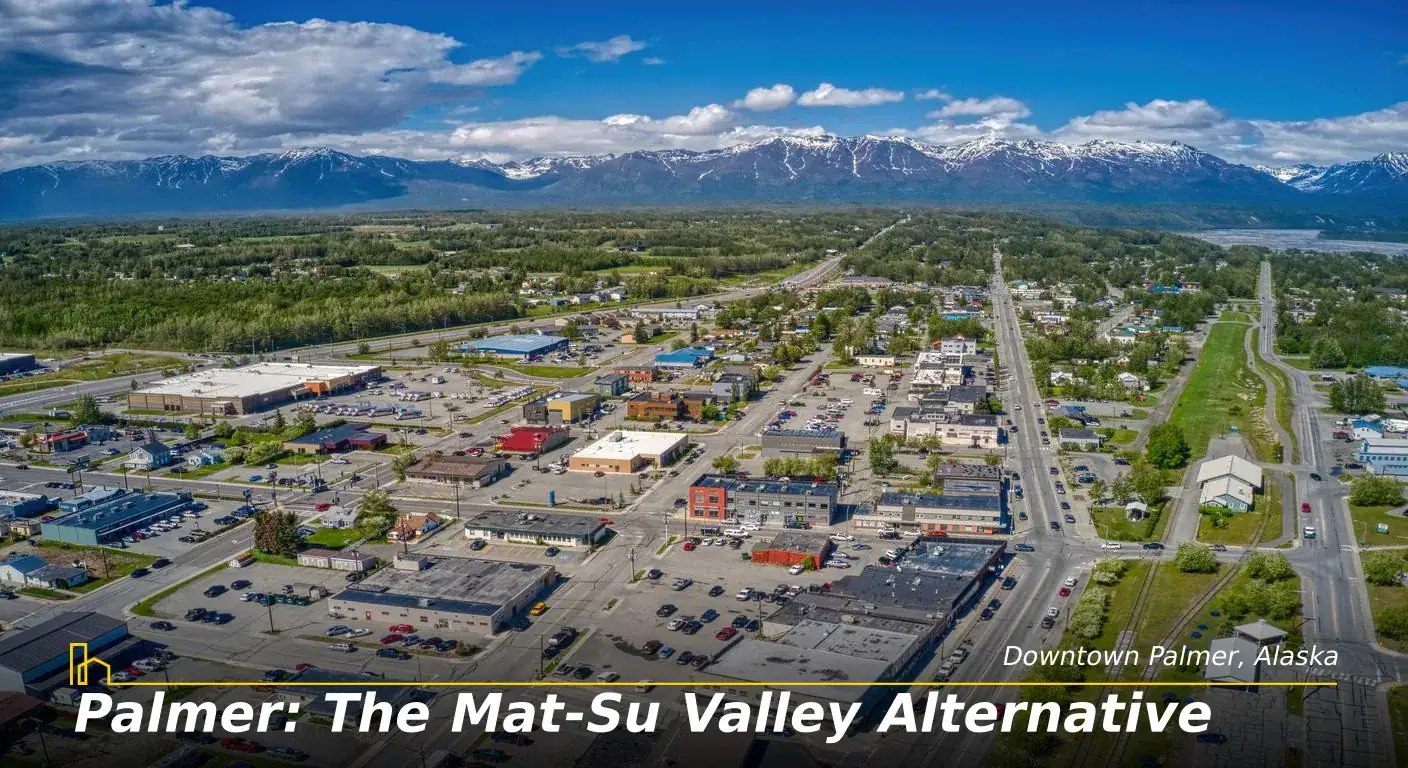
HOMEiA Score: 80/100
- Cost of Living: Approximately 7% below Alaska average
- Monthly Rent: $1,350
- Home price to income ratio: ~4.2:1
- Income to rent ratio: ~48x
- Safety rating: 65/100
A. Cost of Living & Housing: Palmer provides a housing cost advantage for Anchorage commuters and offers agricultural opportunities reducing food costs. The Mat-Su Valley’s growing economy offers diverse housing options at fairer prices than Anchorage.
B. Economy & Job Market: Agriculture, commuter jobs to the metro, local government, and small businesses drive the economy with diverse opportunities. The Alaska State Fair and growing tourism sector provide additional employment options.
C. Access & Infrastructure: Located on the Glenn Highway, Alaska’s Garden is around a 45-minute drive to Anchorage. The community offers adequate education, medical facilities, and reliable internet connectivity compared to more remote locations.
D. Quality of Life & Culture: Known for the Alaska State Fair and farmers markets, here exists family-friendly living with nearby wilderness and mountain views. The community maintains their agricultural heritage while embracing modernity.
The 5 Best Places to Live in Alaska: A City Comparison
Alaska blends rugged wilderness with modern innovation, offering diverse lifestyles across its vast landscape. This guide spotlights the five best Alaskan cities to live in 2025, based on affordability, safety, opportunity, and quality of life. From Anchorage’s energy to Sitka’s island beauty, discover where your frontier future begins.
3. Ketchikan: The First City’s Value

HOMEiA Score: 81/100
- Cost of Living: Around 12% below Alaska average
- Monthly Rent: $1,150
- Home price to income ratio: ~4.6:1
- Income to rent ratio: ~53x
- Safety rating: 70/100
A. Cost of Living & Housing: Ketchikan offers the most affordable access point to Southeast Alaska’s island communities. They have moderated housing costs due to economic diversity with an economical rental market relative to this region.
B. Economy & Job Market: Tourism is vital, especially cruise visitors, supplemented by fishing, government services, and a regional hospital. The seasonal nature of tourism means employment fluctuates, but offers opportunities for supplemental income.
C. Access & Infrastructure: Daily flights to other Alaska locales and the Lower 48 are supported by ferry service. Medical and shopping infrastructure is comprehensive for the city size, though some specialized services require travel.
D. Quality of Life & Culture: Tourism meshes with authentic Alaskan living, access to Tongass National Forest and cultural sites, preserving its fishing heritage. There exists a balance of wilderness access and essential services.
4. Sitka: The Scenic Southeast Gem
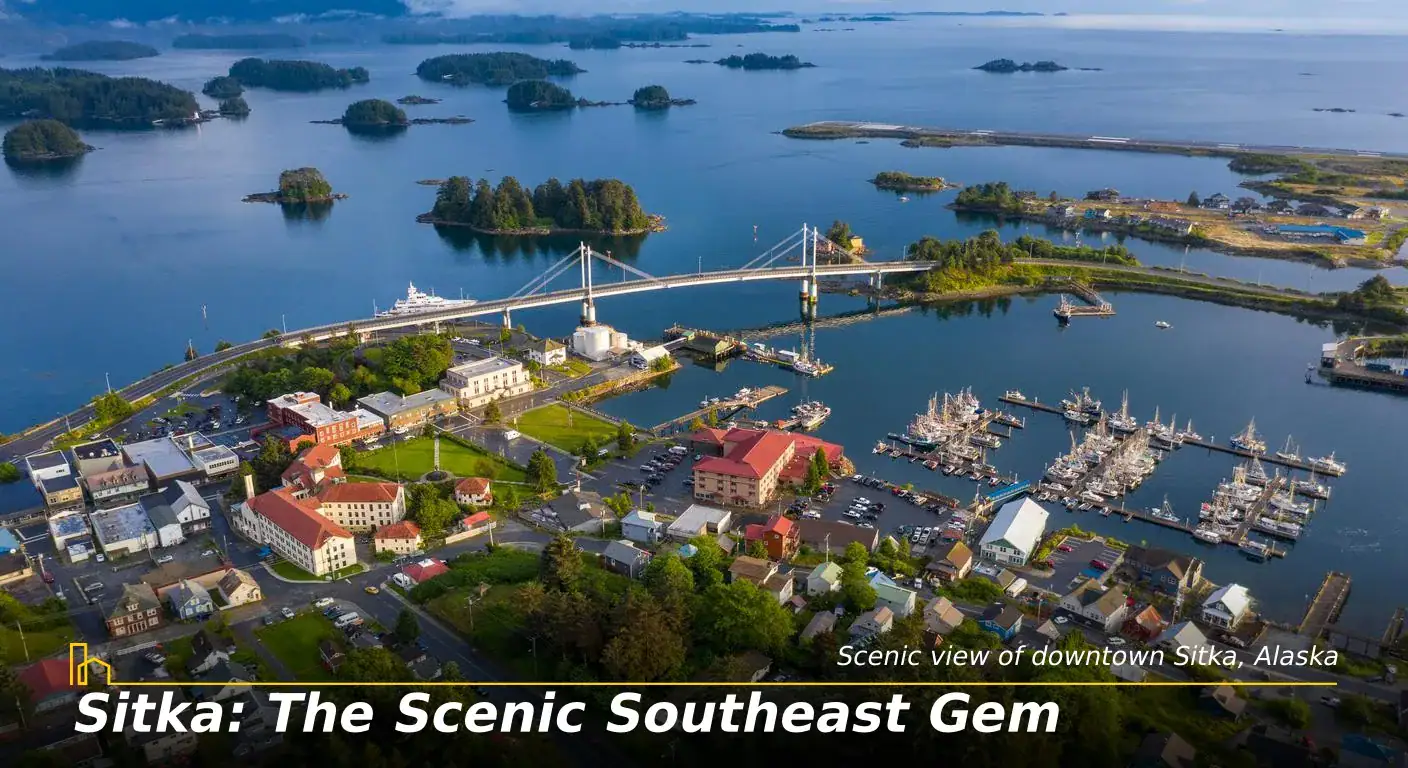
HOMEiA Score: 82/100
- Cost of Living: Approximate 10% below Alaska average
- Monthly Rent: $1,200
- Home price to income ratio: ~4.2:1
- Income to rent ratio: ~49x
- Safety rating: 78/100
A. Cost of Living & Housing: Sitka has surprisingly affordable housing for its amenities and location, supported by a stable population and less tourist development pressure. The rental market offers standout value for Southeast Alaska.
B. Economy & Job Market: Economic opportunities include commercial fishing, healthcare via the regional medical center, education, and government work. Tourism supports seasonal jobs while providing a stable economic foundation year-round.
C. Access & Infrastructure: Daily flights to Seattle and Anchorage plus ferry service connect Sitka. It offers renowned schooling, full hospital service, and essential retail, though some specialized shopping requires planning.
D. Quality of Life & Culture: Rich in Tlingit and Russian heritage, wilderness activities are ingrained in its culture. The community offers exceptional outdoor recreation opportunities with a valued sense of history and tradition.
Recommended for you
5. Juneau: The Capital City Value

HOMEiA Score: 84/100
- Cost of Living: About 3% below Alaska average
- Monthly Rent: $1,500
- Home price to income ratio: ~5.4:1
- Income to rent ratio: ~41x
- Safety rating: 75/100
A. Cost of Living & Housing: Juneau, the state capital, is relatively affordable given its level of amenities, though housing prices are pricier compared to the rest of the state. Government employment offers income stability that offsets high housing costs.
B. Economy & Job Market: Government employment dominates the job market, with tourism, fishing, and mining as vital supplemental industries. White-collar work provides economic resilience during market fluctuations.
C. Access & Infrastructure: Reaching the capital can only be done by air or ferry due to the lack of road connections, leading to high transportation costs. It is home to exceptional medical facilities and regional services, including the University of Alaska Southeast.
D. Quality of Life & Culture: Set between mountains and ocean, there is abundant wilderness alongside urban amenities, with vibrant arts, history, and outdoor recreation. The community combines political significance with natural beauty.
6. Kodiak: The Island Fishing Community
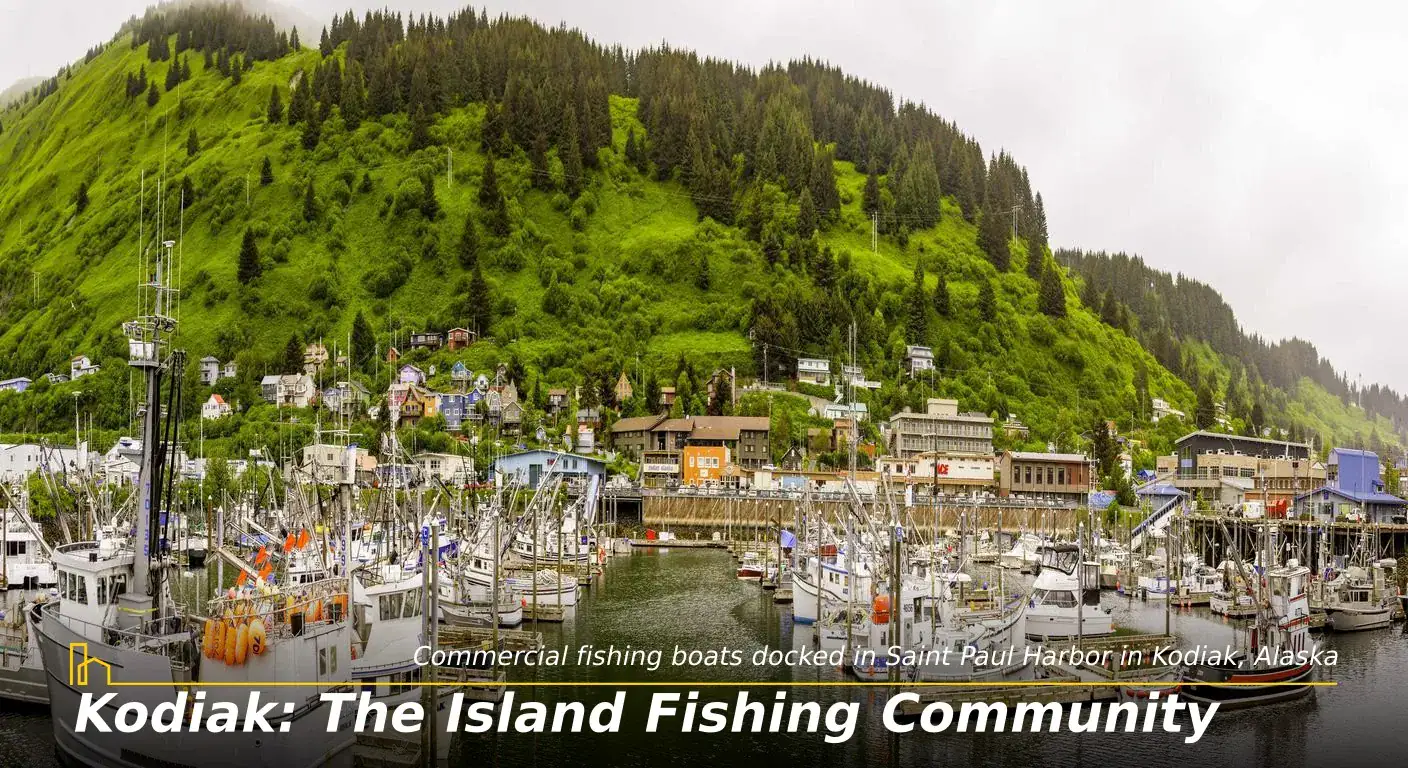
HOMEiA Score: 85/100
- Cost of Living: Approximately 8% below Alaska average
- Monthly Rent: $1,300
- Home price to income ratio: ~4.7:1
- Income to rent ratio: ~53x
- Safety rating: 72/100
A. Cost of Living & Housing: Kodiak’s housing market benefits from Coast Guard Base housing to fortify rental prices. The fishing industry is sustainable, offering employment and affordable local seafood.
B. Economy & Job Market: Commercial fishing for salmon and crab dominates, alongside seafood processing and marine support industries. Their Coast Guard base adds employment stability and economic diversity.
C. Access & Infrastructure: For transportation, regular ferry and air connections to Anchorage exist. The community includes a well-equipped hospital and schools; some specialized care requires travel to the mainland.
D. Quality of Life & Culture: A standout here are their native wildlife, notably Kodiak brown bears. Culturally, Russian and Alutiiq cultural roots harmonize with a pace aligned to maritime rhythms. Residents balance modern amenities with traditional ways of life.
What is It Like to Live in Alaska?
If you’re someone from the lower 48 (or anywhere else for that matter), and you’re planning on making the move up to The Last Frontier, here are the top 19 things to know about what it’s really like living in Alaska…
7. Fairbanks: The Interior’s Economic Hub
HOMEiA Score: 87/100
- Cost of Living: Approximately 5% below Alaska average
- Monthly Rent: $1,400
- Home price to income ratio: ~5.3:1
- Income to rent ratio: ~44x
- Safety rating: 68/100
A. Cost of Living & Housing: In Fairbanks, locals enjoy both urban amenities and affordability in Alaska’s Interior. While still above the national average, housing costs are significantly lower than Anchorage, with reliable rental markets bolstered by University of Alaska Fairbanks students and military personnel from Fort Wainwright and Eielson Air Force Base.
B. Economy & Job Market: As the regional economic center, there are diverse employment opportunities including education, healthcare, military, tourism, and resource industries. The university provides stable academic employment, while seasonal tourism and construction contribute additional income possibilities.
C. Access & Infrastructure: Being a transportation hub for Interior Alaska, it features an international airport (FAI), rail connections (Alaska Railroad), and the start of Dalton Highway. The city has comprehensive medical facilities, including a Level II trauma center.
D. Quality of Life & Culture: Life here features its unique subarctic environment with aurora viewing, midnight sun activities, and access to vast wilderness. The community embraces a frontier spirit with cultural amenities from the university and arts community.
15 Things People Usually Forget When Moving
Whether or not you decide to hire a professional moving company, this guide includes everything you need for completing your move. It’s always best to have this list handy so you can check off each task and know that you’re on top of everything…
III. A Relocation Checklist for Your Alaskan Home
Budget for Seasonal Variations: Account for higher expenses for heating in winter and travel for medical care or shopping not locally available. Factor in the Permanent Fund Dividend as part of your annual income planning.
Secure Employment First: Alaska’s job markets are highly specialized. Secure employment before moving, especially if not in healthcare, education, government, or resource industries. Consider remote work options with reliable internet.
Visit in Multiple Seasons: If possible, experience your chosen community in both summer and winter. The Last Frontier’s seasonal extremes dramatically affect daily life, transportation, and community dynamics.
Understand Transportation Realities: Research local transportation options thoroughly. Affordable communities typically lack road connections, making air travel essential and expensive for leaving town.
Prepare for Utility Costs: Investigate local heating options and costs. In many communities, heating oil prices can make winter utility bills significantly higher than in the Lower 48.
Conclusion: Your Affordable Alaskan Future Awaits
From the college town atmosphere of Fairbanks to the island communities of southeast, these seven locations demonstrate that authentic Alaskan living remains accessible across various budgets and lifestyles. Each community offers its own balance of affordability, amenities, and access to the wilderness experiences that define life in the Last Frontier.
The key to successful living lies in matching your personal and professional needs with a community’s specific characteristics. Whether you seek the relative urban convenience of The Banks, island lifestyle of Kodiak, or regional hub services of Bethel, careful research and realistic budgeting can make your Alaskan dream achievable. For those considering a different state, you might also explore the most affordable places to live in Washington.
Recommended for you
FAQs About the Most Affordable Places to Live in Alaska
1. How does the Permanent Fund Dividend affect affordability in Alaska? The PFD provides an annual payment to eligible residents, typically ranging from $1,000 to $2,000 in recent years, which significantly impacts local economies and personal budgets. This payment offsets higher living costs but is considered supplemental rather than primary income.
2. Are there communities where I can find housing under $250,000? Yes, communities like Bethel, some areas of Ketchikan, and less expensive neighborhoods in Fairbanks and Palmer often have homes priced under $250,000. These homes might require updates or be smaller in size but represent good value in Alaska’s market.
3. How do utility costs compare between regions in Alaska? Utility costs vary significantly: Interior communities such as Fairbanks have high winter heating expenses, while Southeast communities have more moderate heating costs but often higher electricity rates. Remote villages typically face the highest utility costs overall.
4. What are the internet and connectivity options in affordable Alaskan communities? Larger towns like Fairbanks, Juneau, and Kodiak offer multiple broadband providers with relatively reliable connectivity. Smaller or more remote communities often depend on satellite internet, which can be slower and more expensive. It’s important to verify internet options at your specific location.
5. How do I choose between these communities for my family?
- For Job Opportunities: Fairbanks and Juneau have the most diverse employment markets.
- For Lowest Cost: Bethel and Ketchikan tend to offer the most budget-friendly options overall.
- For Families: Palmer and Sitka provide strong schools and family-oriented amenities.
- For Outdoor Access: All these communities offer excellent outdoor opportunities, with Kodiak and Sitka having particularly striking natural settings.
- For Cultural Experience: Bethel and Sitka offer deep engagement with Alaska Native cultures.
Always conduct neighborhood-specific research and visit communities when possible to understand local variations fully.
Table of Contents:
HOMEiA is a city guide site where visitors can find detailed information about communities of interest. HOMEiA’s City Guides, created in partnership with local writers and editors, are curated lists of the best, safest, and most affordable places to live. The guides feature the HOMEiA Score, a proprietary index that rates communities on such factors as housing costs, education, employment, etc.
HOMEiA.com aims to be the premier site for people planning to relocate, providing them with insightful content and connecting them with skilled real estate professionals.
We also empower real estate professionals to establish or strengthen their web presence by highlighting their experience, knowledge and achievements. If you’re selected to join our list of certified real estate professionals, you will distinguish yourself from your peers — and earn HOMEiA’s support.
If you believe in HOMEiA’s mission, please share our website with others.


